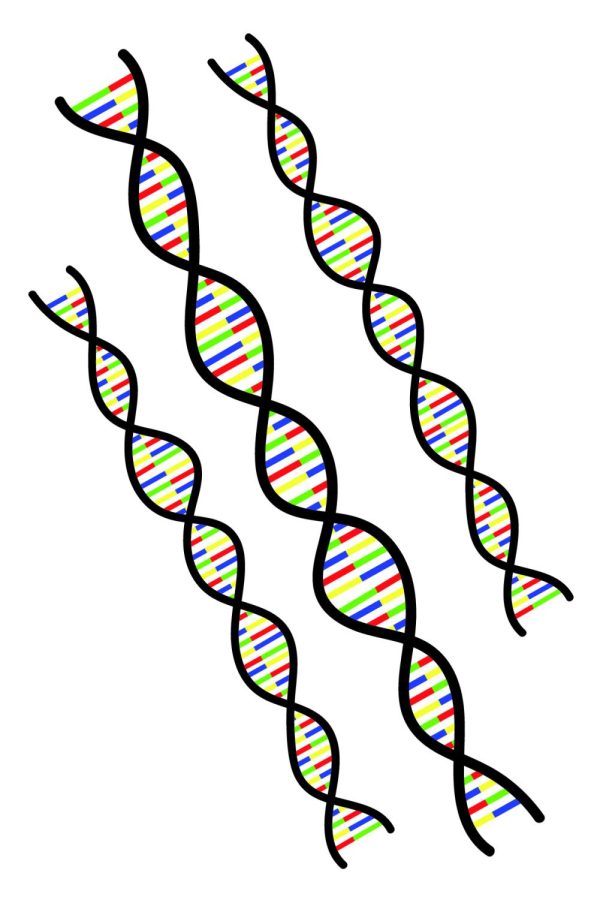Summer Researchers: Kadee Lawrence
Kadee Lawrence, a junior studying biology with an emphasis in molecular genetics, participated in the Summer Undergraduate Scholars Program, an opportunity on campus to enable students to conduct full-time research during the summer.
Lawrence’s enjoyment of biology began in her childhood, playing outside and enjoying the outdoors.
“As a kid, I always liked being outside, and you could say that my hobby was catching bugs and digging holes,” joked Lawrence. “I grew up liking that stuff, and it was an easy concept for me to understand.”
Specifically, the study of genetics hits close to home for Lawrence. “I have a handful of genetic diseases that run in my family … So, I’ve wanted to find answers to that.”
Lawrence worked with Biology Professor Dr. Ryan Haasl on a research project focusing on the presence of Polycystic Ovarian Syndrome in human populations.
Dr. Haasl spoke during the final SUSP presentation in the summer on Lawrence’s growth throughout the project: “I’ve started to see Kadee make connections that I haven’t thought of, which is a very rewarding experience as a teacher.”
The summer project began as an “assessment on the influence of genetic variants in the human gene SHBG on the incidence of polycystic ovarian syndrome,” which sought to investigate microsatellites on genes that may affect PCOS.
A microsatellite is a non-coding part of a gene that occurs before the coding DNA sequence.
As Lawrence and Dr. Haasl dove into their project, they were unable to access the desired database to investigate these microsatellites.
The pair decided to pick up from previous research conducted by Haasl, and his graduate advisor, resulting in the current direction of “a computational investigation of human population genetics and polycystic ovarian syndrome.”
Lawrence described PCOS as a “hormonal disorder that affects 5 to 10% of people between the ages of 15 to 44 during their reproductive years.”
She continued, “Some of the most common symptoms, and ones most typically used in diagnosis of this disease, include excessive hair growth, irregular menstrual periods, weight gain and difficulty losing weight, ovarian cysts, excess androgen and infertility.”
She added to the importance of studying PCOS: “75% of women with PCOS suffer from obesity and women with PCOS have a 2.7-fold increased risk of developing endometrial cancer and a potentially higher risk of developing ovarian cancer. Still so, it is estimated that 75% of women with PCOS go undiagnosed.”
During her SUSP presentation, Lawrence also shared a generational map of her family tree tracking PCOS history and PCOS symptom history.
“I am generation four. My cousin and I are undergoing medical diagnoses for PCOS … The generations behind us have been diagnosed with PCOS. We can go back another generation and see that family members have died from potentially related symptoms, that being ovarian cancer and cervical cancer.”
The team approached the PCOS data in two separate ways.
The first way was Linear Discriminant Analysis. The team used real-world data to view ethnic, regional bias in “suspect” genes and PCOS occurrence.
The second way was simulation-based exploration of sex-specific natural selection, which meant the team used computer-based simulations to analyze how the genes causing PCOS may be expressed differently than other genes that affect both sexes.
While reading literature on PCOS to complete their Linear Discriminant Analysis, Lawrence and Haasl found ten “suspect” genes that may have possible connections to PCOS, but focused on three specifically.
“We took the computational direction towards genetics, so there’s no lab-based data,” explained Lawrence. “It’s all based on known world data from the 1,000 Genomes Project.”
Then, the team used the Online Mendelian Inheritance in Man Database to narrow down genes to the relevant “suspect” genes and calculated global, regional, population-specific and sex-specific trends of how often these genes occurred.
With this information, the team used the LDA to illustrate the similarities and differences between these data groups.
The LDA is a visual tool using a two-dimensional plane to show patterns of relations. The team used these comparisons to illustrate the differences of how often “suspect” genes occurred.
Lawrence and Haasl used a non-coding, neutral gene marker to serve as a baseline for the ancestral relationships of regions.
In the baseline model in Figure 1, the LDA displayed that regional European, Southern Asian and Eastern Asian genes occurred with similar relationships while regional African genes were somewhat isolated.
Figure 1: Baseline LDA on a neutral, noncoding gene marker, Kadee Lawrence graph
The LDA models displayed in Figures 2 and 3 on the first two “suspect” genes showed differing information, however. The regional Southern Asian, Eastern Asian and African genes occurred with similar relationships, while the regional European genes did not.
Figure 2 and Figure 3: LDA models on two “suspect” genes, Kadee lawrence graphs
On the third and final “suspect” gene, the LDA presented European and South Asian genes to be similar, while both Eastern Asian and African genes occurred in exclusive, isolated clusters.
The third LDA seen in Figure 4 provided intrigue and prompted investigation by the team. The LDA shows the European and South Asian groups, which are respectively the lowest and highest PCOS incidence rates in 2017, clumped together.
Figure 4: LDA model on CAPN10 gene, Kadee Lawrence graph
With this knowledge, Lawrence and Haasl investigated more into the specific gene CAPN10. They found that a variant of CAPN10 appeared at a similar frequency in European and South Asian populations.
This conclusion suggested that this variant of CAPN10 may be a risk factor of PCOS in European populations, but the group’s finding also suggest that risk factors can be population specific. In other words, what may be a risk factor for a person of European descent may not be a risk factor for a person of African or East Asian descent.
With the summer behind them, Lawrence and Haasl have now begun the process toward publication of their project.




